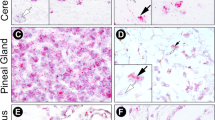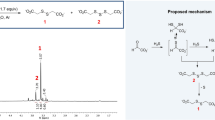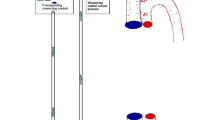Abstract
REASON for the existence of a very potent enzyme system degrading cozymase in brain1 and in certain other cells and tissues2 has been obscure, as intact cozymase is so important to their normal functioning. The rate of breakdown by ground brain is of the order of 1 μmol./mgm. dry weight/hr.1, whereas the rate of respiration by the intact tissue is about 0·5 μmol./mgm. dry weight/hr. Brain preparations split the cozymase molecule between the pyridine-N and ribose1. The results in now show that the degrading enzyme can serve cellular economy in the following ways : (1) By decreasing the quantity of specifically the oxidized form of either coenzymes I or II in coenzyme-dihydrocoenzyme mixtures, their oxidation-reduction potentials can be expected to be lowered, and we have found this to be the case experimentally. (2) This can be expected to affect secondarily the many enzymes sensitive to changes in EH. (3) The degrading enzyme will compete with dehydrogenases for the oxidized forms of the coenzymes, and in mixtures of dehydrogenases favour the action of those of greatest affinity for the coenzymes. (4) Equilibria at certain dehydrogenases can be expected to be modified by the additional presence of an enzyme which removes one component from the system of four which are typically involved. Thus the formation of β-hydroxybutyric acid would be expected to be favoured in the β-hydroxybutyric–acetoacetate system.
This is a preview of subscription content, access via your institution
Access options
Subscribe to this journal
Receive 51 print issues and online access
$199.00 per year
only $3.90 per issue
Buy this article
- Purchase on Springer Link
- Instant access to full article PDF
Prices may be subject to local taxes which are calculated during checkout
Similar content being viewed by others
References
Handler, P., and Klein, J. R., J. Biol. Chem., 143, 49 (1942). McIlwain, H., and Rodnight, R., Biochem. J., 44, 470 (1949).
In micro-organisms: McIlwain, H., and Hughes, D. E., Biochem. J., 43, 60 (1948). In some animal tissues: Spaulding, M. E., and Graham, W. D., J. Biol. Chem., 170, 711 (1947). Govier, W. M., and Jetter, N. S., Science, 107, 146 (1948).
McIlwain, H., Biochem. J. (1949, submitted for publication). I am indebted to the late Dr. G. C. Leitch for a specimen of the pyridylglyoxaline.
cf. Mann, P. J. G., and Quastel, J. H., Biochem. J., 35, 502 (1941).
cf. Dickens, F., Biochem. J., 30, 1064, 1233 (1936).
Baker Z., Fazekas, J. F., and Himwich, H. E., J. Biol. Chem., 125, 545 (1938).
McIlwain and Hughes, op. cit., Kornberg, A., J. Biol. Chem., 176, 1475 (1948). Altman, K. I., and Evans, E. A., J. Biol. Chem., 169, 463 (1948).
Judah, J. D., and Williams-Ashman, H. G., Biochem. J. Proc. (in the press).
Ochoa, S., and Weisz-Tabori, J. Biol. Chem., 174, 123 (1948); Fig. 1.
Das, N. B., and von Euler, H., Nature, 141, 604 (1938). Kornberg, A., and Lindberg, O., J. Biol. Chem., 176, 665 (1948).
Handler and Klein (1942) and McIlwain and Rodnight (1949), op. cit.
Glutamine : McIlwain, H., Biochem. J., 40, 67 (1946). Pantothenic acid, arginine, cocarboxylase, riboflavin, the B6 vitamins and biotin: cf. McIlwain, H., "Advances in Enzymology", 7, 409 (1947). Aneurin: Krampitz, L. O., and Woolley, D. W., J. Biol. Chem., 152, 9 (1944).
Lipmann, F., "Advances in Enzymology", 1, 99 (1941); 6, 231 (1946). Dixon, M., Lectures delivered at University College, London, 1948.
Kornberg, op. cit. Friedkin, M., and Lehninger, A. L., J. Biol. Chem., 174, 757 (1948).
McIlwain and Rodnight ; McIlwain (1949), op. cit.
Author information
Authors and Affiliations
Rights and permissions
About this article
Cite this article
MCILWAIN, H. Significance of the Enzymic Degradation of Cozymase in Living Organisms. Nature 163, 641–642 (1949). https://doi.org/10.1038/163641a0
Issue Date:
DOI: https://doi.org/10.1038/163641a0
This article is cited by
-
�ber die biologische Oxydation und Glykolyse in Tumoren
Klinische Wochenschrift (1955)
Comments
By submitting a comment you agree to abide by our Terms and Community Guidelines. If you find something abusive or that does not comply with our terms or guidelines please flag it as inappropriate.



